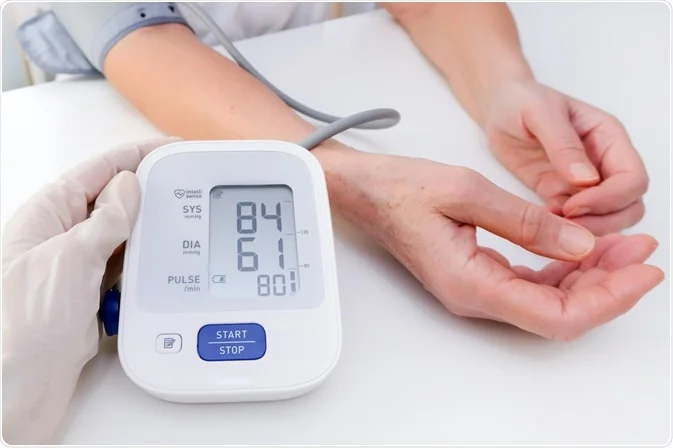Low blood pressure, also known as hypotension, is a condition characterized by abnormally low blood pressure levels that may result in insufficient blood flow to vital organs and tissues. While low blood pressure is often considered less concerning than high blood pressure, it can lead to symptoms and complications that affect daily functioning and quality of life. Recognizing the low blood pressure symptoms is essential for early detection, diagnosis, and management of this condition. Without wasting anymore time, let’s dive deep to know about the 10 low blood pressure symptoms you should be aware of.
What is Low Blood Pressure?
Blood pressure refers to the force that is exerted by the blood against the walls of the arteries as it circulates throughout the body. It is measured using two values: systolic blood pressure (the pressure when the heart contracts) and diastolic blood pressure (the pressure when the heart relaxes between beats). Low blood pressure occurs when these values fall below the normal range, typically defined as a systolic pressure of less than 90 mmHg and/or a diastolic pressure of less than 60 mmHg. You can read our article on the causes of low blood pressure to know why this condition occurs in our body.

As we already know, low blood pressure can manifest with a variety of symptoms, ranging from mild to severe, depending on the degree of hypotension and individual tolerance. 10 most common low blood pressure symptoms are as follows.
Dizziness and Light-headedness
Dizziness and light-headedness are hallmark symptoms of low blood pressure and may occur when standing up suddenly from a sitting or lying position (orthostatic hypotension). Reduced blood flow to the brain can lead to feelings of unsteadiness, imbalance, and a sensation of fainting or near-fainting. Individuals with low blood pressure may need to take precautions when changing positions to minimize the risk of falls and injuries.

Fainting (Syncope)
Syncope, or fainting is one of the most common low blood pressure symptoms that occurs when there is a temporary loss of consciousness due to inadequate blood flow to the brain. Low blood pressure can trigger syncope episodes, particularly in situations where blood pressure drops suddenly, such as standing up quickly or prolonged standing. Fainting may be preceded by symptoms such as dizziness, light-headedness, nausea, sweating, and visual disturbances. Individuals who experience recurrent episodes of syncope should seek medical evaluation to identify underlying causes and receive appropriate management.

Fatigue and Weakness
Low blood pressure can lead to feelings of fatigue, lethargy, and generalized weakness, often attributed to reduced tissue perfusion and oxygen delivery to cells and tissues. Insufficient blood flow to muscles and organs may result in decreased energy levels, impaired physical stamina, and difficulty performing daily activities. Chronic fatigue associated with hypotension may significantly impact quality of life and productivity, necessitating medical evaluation and management.

Blurred Vision
Blurred vision, or transient visual disturbances, may occur as a result of reduced blood flow to the eyes and optic nerve. Changes in ocular perfusion can lead to alterations in visual acuity, clarity, and focus, making it difficult to see clearly. Blurred vision associated with low blood pressure may be temporary and resolve spontaneously or persist if hypotension is not addressed promptly. Thus, all of these visual changes are very common low blood pressure symptoms. Individuals experiencing visual changes should seek medical evaluation to rule out underlying eye conditions and assess for hypotension-related complications.

Nausea and Vomiting
Nausea and vomiting may occur in individuals with low blood pressure, particularly during episodes of orthostatic hypotension or prolonged standing. Reduced blood flow to the gastrointestinal tract can lead to nausea, abdominal discomfort, and feelings of queasiness. In severe cases, hypotension-induced nausea may progress to vomiting, further exacerbating fluid and electrolyte imbalances. Adequate hydration, rest, and dietary modifications may help alleviate gastrointestinal symptoms associated with low blood pressure.

Cold and Clammy Skin
Low blood pressure can cause changes in skin perfusion and temperature regulation, leading to cold, clammy, or pale skin. Reduced blood flow to the skin and peripheral tissues may result in vasoconstriction, decreased skin temperature, and diminished sweating response. Cold and clammy skin may be accompanied by sensations of numbness, tingling, or pins and needles. All of these are also considered as major low blood pressure symptoms. Individuals experiencing persistent skin changes should seek medical evaluation to assess for hypotension-related complications and circulatory disturbances.

Rapid or Weak Pulse
Hypotension may be associated with alterations in heart rate and rhythm, resulting in a rapid or weak pulse. In response to decreased blood pressure levels, the heart may compensate by increasing heart rate (tachycardia) to maintain adequate perfusion to vital organs. Alternatively, a weak or thready pulse may be indicative of reduced cardiac output and diminished stroke volume. Monitoring heart rate and pulse quality can provide valuable information about cardiovascular function and hemodynamic stability in individuals with low blood pressure.

Difficulty Concentrating
Low blood pressure can impair cognitive function and mental clarity, leading to difficulty concentrating, memory problems, and cognitive slowing. Reduced cerebral blood flow and oxygen delivery to the brain may result in cognitive deficits, including decreased attention span, information processing speed, and executive function. This is one of the most underrated low blood pressure symptoms that most people overlook. Individuals with hypotension-related cognitive symptoms may experience challenges with work, school, and daily tasks, necessitating accommodations and support to optimize cognitive performance.

Thirst and Dehydration
Low blood pressure may contribute to fluid and electrolyte imbalances, leading to increased thirst and dehydration. Reduced blood volume and inadequate tissue perfusion can stimulate thirst mechanisms and prompt individuals to consume more fluids to maintain hydration. Dehydration can exacerbate symptoms of hypotension, including dizziness, weakness, and fatigue, and may require rehydration therapy and electrolyte replacement. Monitoring fluid intake and maintaining hydration status are important for managing hypotension-related symptoms and preventing complications.

Shortness of Breath
In some cases, low blood pressure symptoms may be accompanied by other signs of dyspnea, or difficulty breathing. Reduced blood flow to the lungs and pulmonary circulation can lead to feelings of breathlessness, chest tightness, and air hunger. Shortness of breath associated with hypotension may be exacerbated by physical exertion, stress, or underlying respiratory conditions. Prompt evaluation and management are essential for identifying the underlying cause of dyspnea and addressing hypotension-related respiratory symptoms.
Also Read: How to treat lower blood pressure in 10 proven ways
The Sum-up
Low blood pressure is a condition that is known by abnormally low blood pressure levels that may result in symptoms such as dizziness, light-headedness, fatigue, weakness, fainting, blurred vision, nausea, cold and clammy skin, rapid or weak pulse, difficulty concentrating, shortness of breath, thirst, and dehydration. Recognizing these symptoms of low blood pressure and understanding their potential causes is essential for early detection, diagnosis, and management of hypotension.
Individuals experiencing low blood pressure symptoms should seek medical evaluation to identify underlying causes, assess for complications, and receive appropriate treatment and lifestyle recommendations. Collaborative efforts among healthcare providers, public health initiatives, and community-based interventions are needed to raise awareness about low blood pressure and promote cardiovascular wellness across populations. Hopefully, you found this article helpful enough. If you really did then what’s stopping you from commenting your valuable thoughts in the comments?! Let us know and thanks for visiting and appreciating our work.
